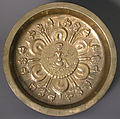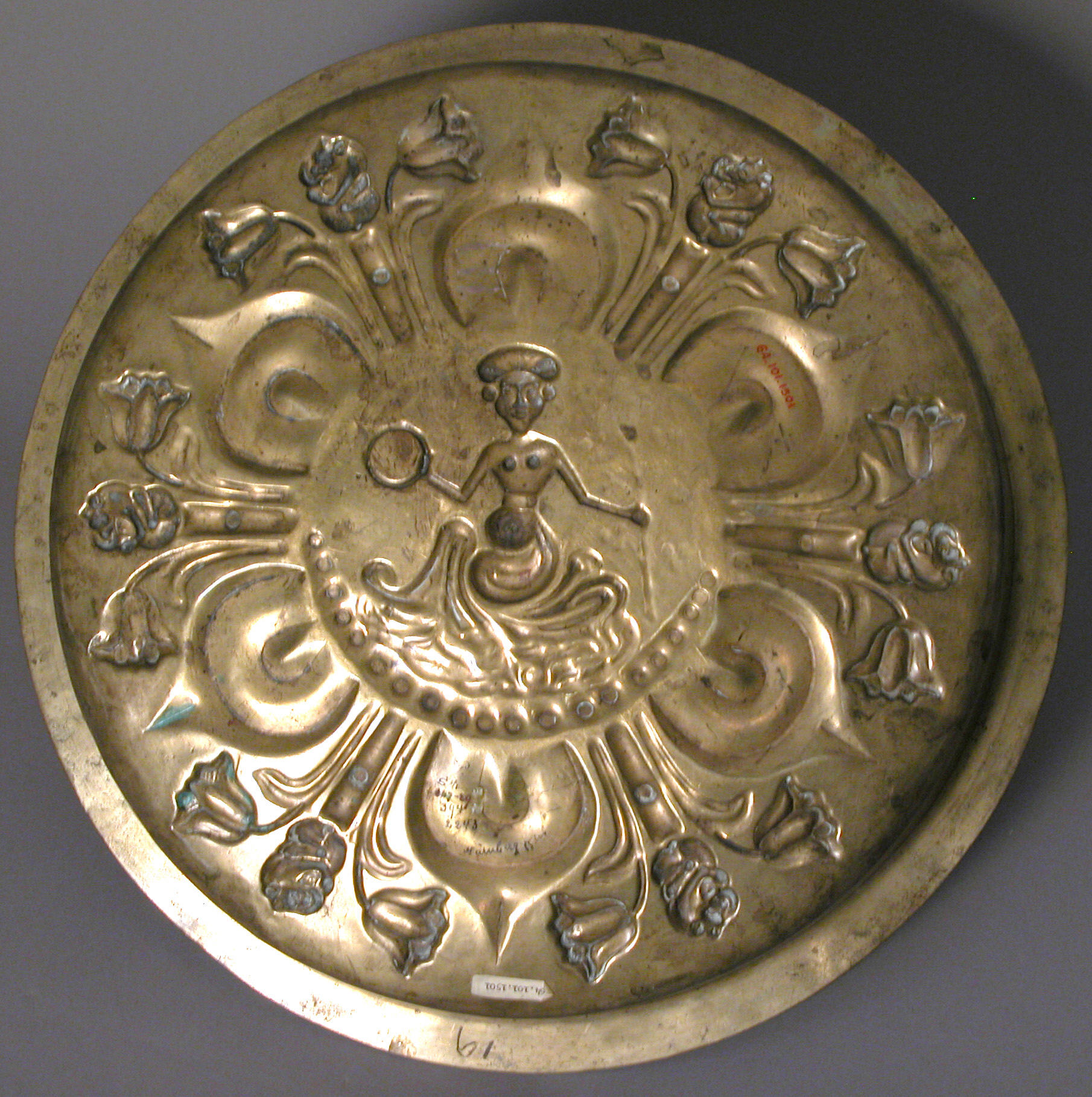Plate
Not on view
According to some scholars, Dinant was the only French-speaking town of the Lowlands to join the German Hansa as a selling agent and a guarantor of the delivery of copper ( the major component of both bronze and brass) imported from northern Germany via Cologne and Aachen. Already the center of a flourishing metalworking trade, Dinant became the principal center for the production of plates such as this one. Its distinct position is evident in the generic name “dinanderie,” which came to be associated with metalwork of this sort. Dinant’s primacy in the trade continued until the city was sacked by the Duke of Burgundy in 1466.
Although dinanderie plates were in enormous demand in the second half of the fifteenth century, the traditional, painstaking method of brass beating was not to be replaced by the easier process of casting until the sixteenth century. The need for mass production led to a decline in quality. Certain motifs, like the seated woman holding a coronet of flowers on this plate, were repeated almost without variation. The encircling motifs did, however, become more complex. In this example, the petallike shapes alternate with addorsed flowers flanking tiny bears seated on poles, each grasping one of its hind paws.
Although dinanderie plates were undoubtedly proudly displayed on sideboards (and sometimes used in the liturgy), the worn and battered condition of many of them indicates that they might also have served as charges on which the food was brought to the table.
Due to rights restrictions, this image cannot be enlarged, viewed at full screen, or downloaded.
This artwork is meant to be viewed from right to left. Scroll left to view more.



